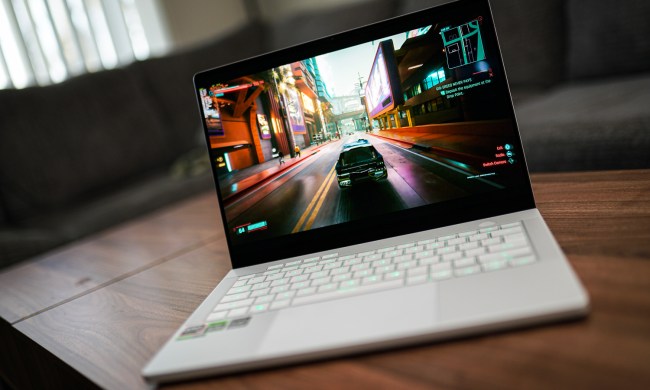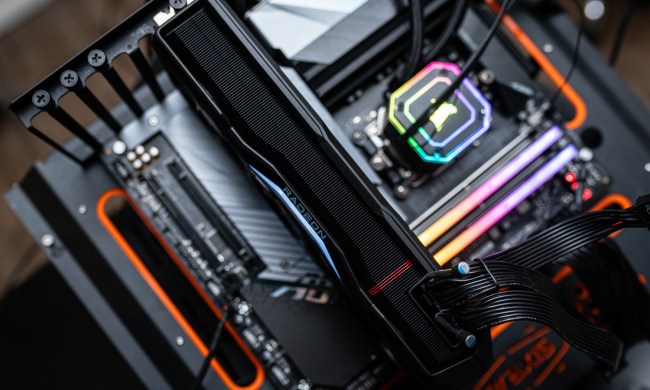Rumor has it that AMD might be stepping away from the idea of making high-end graphics cards in the next generation. Instead, it appears that its upcoming Radeon RX 8000 series GPUs might be tailored to fit the mainstream segment, with no high-end options to match the level of the RX 7900 XTX and beyond.
For generations, PC gamers have gathered in their camps to trade blows on if Nvidia or AMD is better, and most of that conversation centers around the most powerful GPUs these brands have to offer. If AMD decides to ditch that fight, though, it might be the best move Team Red has ever made.
Change of plans?

Not too long ago, we heard that AMD’s flagship Navi 41 GPU is well on its way to arriving as part of the Radeon RX 8000 series. However, it appears that AMD may have had a change of plans.
Reliable Twitter leaker Kepler_L2 recently teased that the Navi4 lineup will not have any high-end graphics cards. Two other leakers seem to have corroborated this, with All_The_Watts saying that “only Navi 43 and Navi 44 [will] survive.”
Navi4 lineup will not have any high-end GPUs
Think of it like RDNA1 or Polaris generation.
— Kepler (@Kepler_L2) August 4, 2023
While leaks should never be taken at face value, it seems like change is imminent. After all, AMD willingly stepped down from the race to the best GPU in RDNA 3, and it never managed to beat Nvidia’s RTX 3090 Ti in the previous generation (though the RX 6950 XT put up quite the effort).
We don’t know any specifics as of yet, and AMD is unlikely to tell us much of anything until it’s ready, which is probably not until next year at the earliest. The change could be good for AMD and its spotty track record with GPUs this generation, though.
Small fish, huge pond
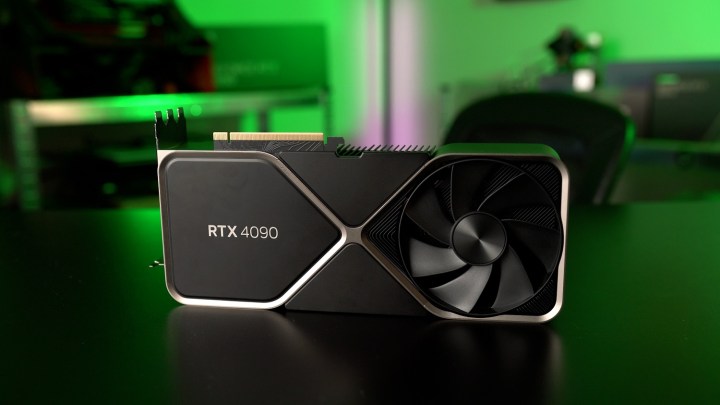
In this generation, Nvidia flew through most of its lineup. We’ve got cards ranging from the expensive $1,600 RTX 4090 to the mostly affordable $300 RTX 4060, and there are a bunch of options in between. Meanwhile, AMD started out strong with its RTX 4080 competitor, the RX 7900 XTX, and the weaker RX 7900 XT, but it’s been mostly radio silence since then.
Sure, we’ve got the RX 7600 now (which is surprisingly decent, as you can learn in our RX 7600 review), but there’s still a massive gap between the three cards. Many users who want to game at 1440p will default to Nvidia because AMD’s only options are the two RX 7900s, and many people choose the 4070 Ti over the XT model.
While the RTX 4070 Ti is about the same price as the RX 7900 XT, Nvidia still controls the largest portion of the market by far, and that’s enough for many gamers to turn that way instead of trying out AMD. Let’s not forget the fact that Nvidia is really doing the rounds this generation by hyping up the latest Deep Learning Super Sampling (DLSS 3), which offers a tangible boost in frame rates and could justify a purchase all on its own. Still, with all the hype around DLSS 3, the RTX 4070 Ti doesn’t even need to be particularly good for people to pick it over the RX 7900 XT.
Early on in this gen, AMD made it quite clear that it’s not planning on competing against Nvidia’s top GPU. It still dipped into the high-end segment with its two flagships, and while that dip showed a lot of promise, it hasn’t proved to be successful so far.
There is little reason for anyone to buy the RX 7900 XTX when they can have the RTX 4080 at a similar price point. Personally, I chose not to switch to AMD yet in this gen. What’s worse is that gamers can just buy the $650 RX 6950 XT and game at 4K with no problems. Spending an extra $400 or more for an additional 16 frames per second (fps) on average in 4K gaming is, well, a choice — a choice that many people won’t make.
AMD tried to reach for the stars in this generation, but if anything, its absence from the mainstream segment proves that there may have been better ways to go. This is coming from someone who really believes that both AMD and Intel need to keep trying to reclaim some of the GPU market from Nvidia in order to bring GPU prices back to where they should be.
Finding a niche
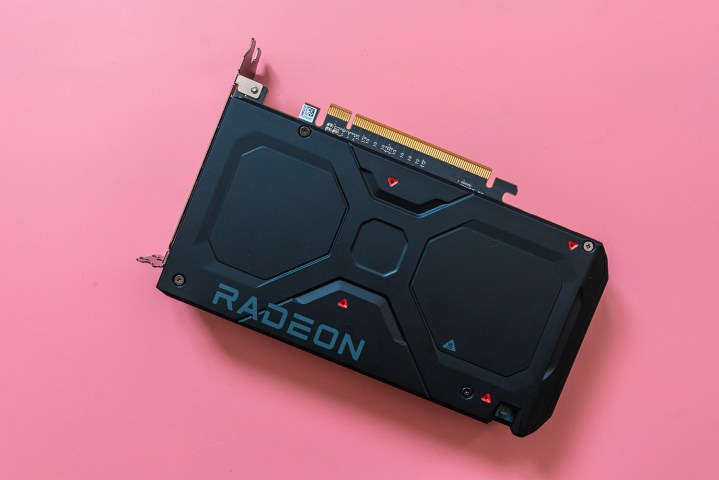
Let’s be realistic — as much as AMD can create some superb graphics cards, both at the high end and at the entry level, it might never straight-up beat Nvidia. I’m not just talking about raw performance here, either.
Nvidia maintains the lead in many things that people consider important at the high-end, but may not be so bothered by when shopping for a more affordable graphics card. We’ve got AI workloads, where Nvidia remains the go-to option both due to the hardware and the software support, but there’s also ray tracing and DLSS, both of which are major selling points for Nvidia right now.
As far as ray tracing goes, AMD has made improvements with the RX 7900 XTX and the RX 7900 XT, but it still can’t hope to meet Nvidia’s ability to maintain decent frame rates. One look at the chart below shows us that in terms of fps, the gains are small when compared to the RX 6950 XT. It’s telling that AMD’s current-gen cards are just not keeping pace with Nvidia’s last-gen offerings.
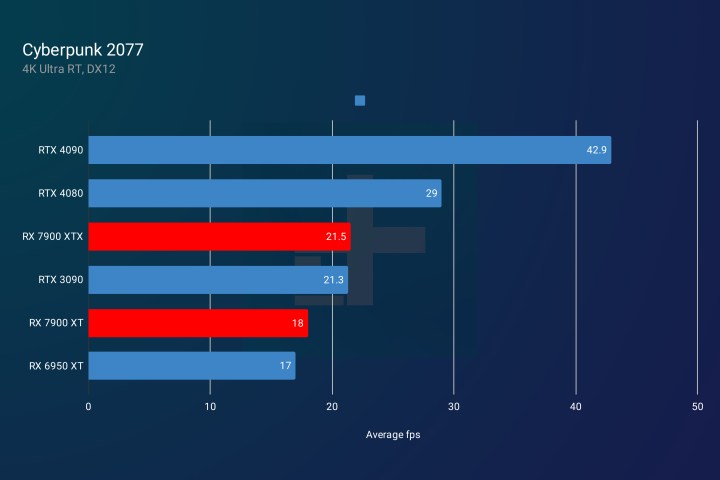
Comparing DLSS 3 to AMD’s FidelityFX Super Resolution 2.0 also leaves the latter in a less-than-favorable position. While AMD made great strides between FSR and FSR 2, Nvidia is still months, maybe years ahead with its frame generation tech in DLSS 3. If a card along the likes of the RTX 4070 can outpace a behemoth like the RTX 4090 just thanks to DLSS 3 (more in our RTX 4070 review), it’s important to pay attention.
Even with some visual artifacts, DLSS 3 still makes games along the likes of Cyberpunk 2077 perfectly playable on budget-friendly graphics cards. That’s just bad news all around for AMD, because, unlike ray tracing, DLSS 3 is a welcome addition to budget and enthusiast GPUs alike, luring people of various budgets in Nvidia’s direction.
AMD was quick to react to Nvidia’s DLSS 3 by saying that it’s already working on a similar tech of its own, but it’s hard to say when that might become a reality. For now, Nvidia has AMD beat in ray tracing and in DLSS 3, and that’s not a good thing at the high-end where money is less of a concern for prospective buyers.
Assuming that Nvidia releases an RTX 5090 at some point, if AMD was to try to rise to meet the challenge, it might still have fallen a little bit short. Be it Nvidia’s software stack or GPU architecture, let’s imagine that Nvidia would still retain the lead in the next generation. Then what? AMD would be left with high-end GPUs that many people would choose not to buy.
It’s the same dynamic we’re seeing with the RTX 4080 and RX 7900 XTX now. At that price point, many buyers are fine with spending an extra $100 or $200 to get the best of the best, and that spot still belongs to Nvidia. The history would only repeat itself if AMD would end up in this same place come RDNA 4.
Perhaps AMD’s niche should not be so niche after all. It should set aim at the mainstream market, meaning GPUs up to the RX 8700 XT and not beyond that.
More high-end GPUs? No, thank you
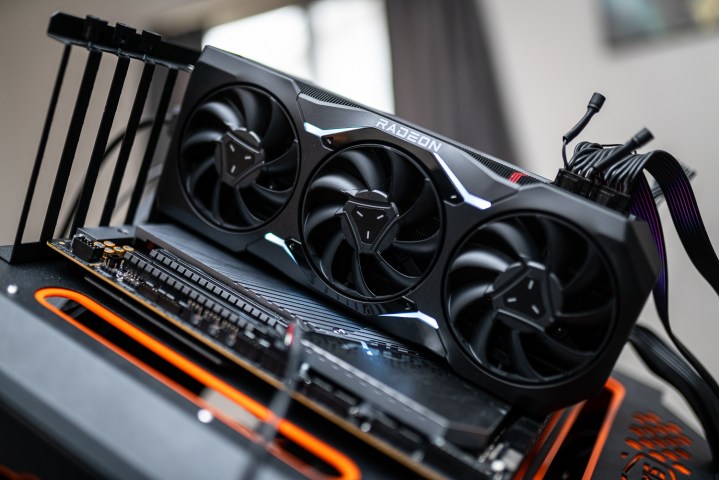
The Steam Hardware Survey is sometimes inconsistent and the data is just a small sample of the overall market, but one thing remains true throughout each and every survey — high-end GPUs make up a small portion of it.
It’s not the likes of the RTX 4090 and the RX 7900 XTX that top the charts month after month. In fact, AMD’s flagship has only just crawled its way into the rankings with a measly 0.17% share of all surveyed PCs. It’s the RTX 3060, RTX 4060, and even the GTX 1060 that most people turn to when they build a gaming PC.
The same can be said of AMD. While all of its GPUs only make up about 10% of surveyed devices, its top options include integrated Radeon graphics, followed by the old-but-gold RX 580. The most popular fairly recent GPUs include the RX 5700 XT and the RX 6700 XT. Enthusiast-grade cards seem pretty rare by comparison for both GPU makers.
There’d be much more room for AMD to prosper if it’d really commit and try to compete against Nvidia in that mainstream sector. Give us more cards like the RX 6700 XT or the 6600 XT, as that is what most users really need.
It wouldn’t be such a bad idea for AMD if it were to take a note out of Intel’s playbook. While it didn’t make much of a splash with Intel Arc, it immediately set out to beat Nvidia with its pricing, and that’s the approach that makes these GPUs worthwhile.
Nvidia can maintain control over the high-end portion of the market, where AMD struggles to compete, and AMD can focus on serving the part where there are more budget-conscious buyers. Perhaps this would result in more GPUs overall, which can only mean good things for those who want to buy a graphics card.
Ultimately, we won’t know what AMD might be planning until it’s ready to tell us. One thing is for sure: If AMD does decide to shift gears and focus on midrange GPUs for a generation or two, I won’t see it as a failure, but a rather smart move.


